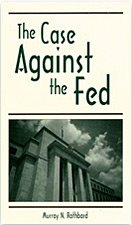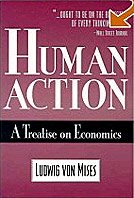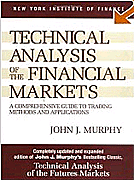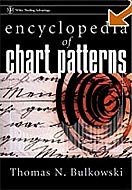Fiat Money: History Repeats Itself
Fiat Money: History Repeats Itself
Doug Casey
The International Speculator
Jan 5, 2007
I suspect that 98% of investors - and maybe more -- have little to no understanding of monetary history. Yet, failing to understand the past, in this case, leaves a black hole in your ability to understand the implications of the current tenuous condition of the U.S. dollar.
While no one can easily imagine all the many ways the end of U.S. dollar hegemony might affect complex and deeply intertwined global financial markets, you can, however, better prepare for what's coming by looking back at just one of the many examples of a fiat currency on its way into the trash bin of history.
The following article by Shannara Johnson, an editor for the International Speculator, examines the monetary roots of the French Revolution and, in the process, provides a compelling parallel to the current state of the U.S. dollar. Read it and pass it along.
Doug Casey
For years now, the editors at Casey Research have been warning-nay, shouting from the rooftop-about the danger inherent in any fiat currency, and especially in the modern U.S. dollar, a currency some skeptics have called "funny money."
There is nothing funny, though, about the potential for trouble as today's purely paper dollar declines. It is trouble that has happened before, and history is, or should be, our best teacher. But as we'll see, mankind seldom learns and rarely remembers enough from its mistakes.
One of the most riveting accounts of the catastrophic effects of replacing a gold-based or silver-based currency with paper money comes from Andrew Dickson White (1832 - 1918), the diplomat, author and educator who co-founded Cornell University.
In the mid-1800s, White started to collect and analyze newspaper articles and documents that had appeared during the French Revolution, especially those pertaining to the Revolutionary issues of paper money. In 1912, he published Fiat Money Inflation in France, an essay that these days, once more, has gained a striking timeliness.
In 1789, on the eve of the French Revolution, the French government found itself in deep trouble with heavy debt loads and chronic deficits. A general lack of confidence in the business world had led to the decline of investment, and the economy was stagnating.
"Statesmanlike measures, careful watching and wise management would, doubtless, have ere long led to a return of confidence," writes White, "a reappearance of money and a resumption of business; but these involved patience and self-denial, and, thus far in human history, these are the rarest products of political wisdom. Few nations have ever been able to exercise these virtues; and France was not then one of these few."
Instead, as politicians tend to do, France's National Assembly looked for a shortcut to prosperity, and soon calls for the introduction of paper money were heard. Some prudent individuals, such as then-Minister of Finance Jacques Necker, urgently warned against it. After all, only 70 years earlier, the country had learned a tough lesson when Scottish economist John Law had presided over a system of fiat money with ruinous consequences.
But Necker and his supporters were shouted down as "the pressure toward a popular currency for universal use grew stronger and stronger." The plan sounded sensible: the government would confiscate the lands of the French Church-which then owned between one-fourth and one-third of all French real estate-and issue a total of no more than 400 million livres in large notes of 1,000, 300 and 200 livres, called assignats, that would be backed by a piece of land. Moreover, every note would bear 3% interest, to encourage holders to hoard them.
The influx of fresh money would give the French treasury "something to pay out immediately. . . relieve the national necessities. . . stimulate business. . . [and] give to all capitalists, large or small, the means for buying from the nation the ecclesiastical real estate." From the proceeds, the nation would pay its debts and obtain new funds for new necessities-a bullet-proof proposal, or so it seemed.
At first, the results of issuing the assignats appeared to be a dream come true, says White: "the treasury was at once greatly relieved; a portion of the public debt was paid; creditors were encouraged; credit revived; ordinary expenses were met. . . trade increased and all difficulties seemed to vanish."
Had the authorities stopped there, White suggests, the effects might actually have been beneficial. Regretfully, though, "within five months after the issue of the four hundred million in assignats, the government had spent them and was again in distress."
Immediately people throughout the country started to cry for another issue of notes. Paper critics cautioned that there'd be no stopping once the nation had stepped onto the slippery slope of inflation, but others dismissed the warning, saying "the people were now in control and that they could and would check these issues whenever they desired."
Here's where the disturbing parallels to modern-day America begin.
By 1790, the paper-pushers had persuaded themselves that specie [precious metals, coins] was an outmoded form of currency after all, what could be better than money backed by land that would only appreciate in value? It eerily reminds us of the U.S. housing boom and the easy, no-holds-barred mortgage deals that have been sold to sub-prime borrowers.
Or take the Comte de Mirabeau, one of the greatest paper advocates and demagogues, who at that time gave his powerful "Stay the Course" speech, concluding "We must accomplish that which we have begun."
Or Pierre Paul Royer-Collard, who sounded disturbingly like Ben "Helicopter" Bernanke when he told the National Assembly, "If it is necessary to create five thousand millions, and more, of the paper, decree such a creation gladly."
It was a done deal, and France began its slide into inflation. Soon calls for small-denomination notes grew louder. "The cheaper currency had largely driven out the dearer," writes White," paper had caused small silver and copper money mainly to disappear; all sorts of notes of hand, circulating under the name of 'confidence bills,' flooded France-sixty-three kinds in Paris alone."
Everything was tried to supply small-denomination silver and copper coins and hold them in circulation. Laws were passed that forced citizens to send their silverware and jewels to the mint. Churches and convents had to give up most of their silver and gold vessels, and church bells were melted down to supply the mint with copper. Still, silver and copper grew scarcer and scarcer-and eventually the government gave in and printed smaller notes, starting out with five francs and finally going down to one single sou.
When inflationary pressure grew, says White, "there cropped up a doctrine old and ominous. . . that all currency, whether gold, paper, leather or any other material, derives its efficiency from the official stamp it bears, and that, this being the case, a government may relieve itself of its debts and make itself rich and prosperous simply by means of a printing press: fundamentally the theory which underlay the later American doctrine of 'fiat money.'"
And just like today's Americans, who happily spend money they haven't yet earned, "Frenchmen now became desperate optimists, declaring that inflation is prosperity. . . The nation was becoming inebriated with paper money. The good feeling was that of a drunkard just after his draught; and. . . as draughts of paper money came faster, the successive periods of good feeling grew shorter."
Yet more and more signs of the coming cataclysm started to appear. Even though the amount of paper money had increased, prosperity had faded. Business became stagnant, and manufacturers starting laying off workers. In one town, 5,000 workmen were discharged from the cloth factories, but people still didn't recognize the real cause. Exports were too cheap, they claimed, and heavy tariffs were placed on foreign goods.
A collapse in manufacturing and commerce was inevitable, says White, "just as it came at various periods in [France], Austria, Russia, America, and in all countries where men have tried to build up prosperity on irredeemable paper."
Faced with the prospect of a continuing devaluation of paper money, the public began to see saving and caution as foolish, and the naturally thrifty French turned into a nation of gluttons and gamblers. People started to throw their money haphazardly at the stock market and "in the country at large there grew a dislike of steady labor and a contempt for moderate gains and simple living."
The tumor, as White calls it, spread to business circles, journalism and politics; indulgence was followed by corruption growing "as naturally as a fungus on a muck heap."
One economic perversion bred the next. The Comte de Mirabeau's previous claims that patriotism and enlightened self-interest of the people would maintain the value of the paper money couldn't have been more wrong. In fact, a vast debtor class, consisting mainly of those who had purchased the church lands from the government, proved to have a vested interest in the depreciation of the currency. Since only small down payments had been required, with the balance to be paid in deferred installments, land buyers were hoping for a devalued currency to diminish their debt.
"Before long, the debtor class became a powerful body extending through all ranks of society. . . all pressed vigorously for new issues of paper. . . apparently able to demonstrate to the people that in new issues of paper lay the only chance for national prosperity. . . [While] every issue of paper money made matters worse, a superstition gained ground among the people at large that, if only enough paper money were issued and were more cunningly handled, the poor would be made rich. Henceforth, all opposition was futile."
In December of 1791, a new issue was ordered that diluted the value of the 100-livres note (whose value had already fallen to 80 livres) to 68 livres. As values fell, official rhetoric became even more adamantly optimistic and upbeat. Newspapers, political speeches and pamphlets proclaimed that "a depreciated currency is a blessing; that gold and silver form an unsatisfactory standard for measuring values. . . that commerce with other nations may be a curse, and hindrance thereto may be a blessing. . . that the laws of political economy, however applicable in other times, are not now so in France; that the ordinary rules of political economy are perhaps suited to the minions of despotism but not to the free and enlightened inhabitants of France at the close of the eighteenth century," and so on.
In March 1792, after the fifth, 300-million-livre issue of paper money, the government decided that payment to all public creditors for any amount over 10,000 francs would be suspended. This was hailed as a boon for the poorer classes, but the result was just the opposite. Capitalists began to quietly withdraw their money from labor and locked it up "in all the ways financial ingenuity could devise. All that saved thousands of laborers. . . from starvation was that they were drafted off into the army and sent to be killed on foreign battlefields."
We know from contemporary accounts that flour rose from 2 francs in 1790 to 225 francs in 1795, a pair of shoes from 5 francs to 200.
While the prices of all products had increased enormously, wages for the laboring classes stagnated. Paper issue followed paper issue, until the money in circulation reached 3 billion francs in 1793 and there was still no end in sight. Unrest in the general population grew, and more and more working-class people called for capital punishment for price gauging and a 400-million-franc tax on bread for the rich.
On February 28, 1793, a mob of men and women in disguise began looting 200 stores in Paris, seizing everything they could get their hands on. Order could only be restored by buying off the mob with a 7-million-franc grant.
Shocked out of their complacence, the French government implemented new measures to raise money. One was the Forced Loan, a tax on anyone with an income over 1,000 francs. For lower-income earners, the tax was fixed at 10%, for everyone over 9,000 francs of income at 50%.
Another panic measure was the Law of Maximum, consisting of four rules which, again, supposedly served to help the working class. "First, the price of each article of necessity was to be fixed at one and one-third its price in 1790. Secondly, all transportation was to be added at a fixed rate per league. Thirdly, five per cent was to be added for the profit of the wholesaler. Fourthly, ten per cent was added for the profit of the retailer."
The first result of the Maximum law was that sellers did everything to evade the fixed price-farmers, for example, would sell as little as possible, and so supplies became scarce, so urban citizens were put on an allowance and could only buy limited quantities of goods. Foreign goods, whose prices were much higher than the fixed upper limit, couldn't be legally sold by merchants, many of whom went out of business. Others ended up on the guillotine for violations of the Maximum law.
"To detect goods concealed by farmers and shopkeepers, a spy system was established with a reward to the informer of one-third of the value of the goods discovered. To spread terror, the Criminal Tribunal at Strassburg was ordered to destroy the dwelling of anyone found guilty of selling goods above the price set by law. . . [If a farmer] tried to hold back his crops or cattle, alleging that he could not afford to sell them at the prices fixed by law, they were frequently taken from him by force and he was fortunate if paid even in the depreciated fiat money-fortunate, indeed, if he finally escaped with his life."
Discriminating between paper and specie in any transaction became a felony punishable with death, as did selling gold or silver coins. At the height of this insanity, in 1794, the Convention decreed that "the death penalty should be inflicted on any person convicted of 'having asked, before a bargain was concluded, in what money payment was to be made.'" All commerce in the precious metals was suppressed, until the "Maximum" was abolished one year later.
The currency nightmare ended on February 18, 1796, when under a new government the machinery, plates and paper for printing assignats were ceremonially broken and burned on the Place Vendome in Paris. Final calculations determined that the overall amount of paper money in existence was 40 billion francs. In comparison, a gold louis d'or had climbed from a value of 920 paper francs in August 1795 to 15,000 francs less than one year later. One franc in gold was worth 600 francs in paper.
While the assignats had hurt the rich, they had absolutely devastated the working class. According to historian Heinrich von Sybel, "Financiers and men of large means were shrewd enough to put as much of their property as possible into objects of permanent value. The working classes had no such foresight or skill or means. After the first collapse came up the cries of the starving. Roads and bridges were neglected; many manufactures were given up in utter helplessness."
Unbelievable and a great lesson for us. Interpreting and comparing the signs-the stagnation in real wages, the public's unfettered euphoria about the already faltering economy, the nearly word-for-word pep talk spanning centuries--we may be closer to the point of no return than we think.
And don't make the mistake to think those French politicians were morons, warns Andrew Dickson White. "[The] men who had charge of French finance during the Reign of Terror and who made these experiments, which seem to us so monstrous. . . were universally recognized as among the most skillful and honest financiers in Europe. . . [which shows] how powerless are the most skillful masters of finance to stem the tide of fiat money calamity when once it is fairly under headway; and how useless are all enactments which they can devise against the underlying laws of nature."
The International Speculator is a monthly newsletter dedicated to keeping investors up to date on major investment trends and on carefully researched stocks with the potential to generate double- or triple-digit returns in the coming 12 months. For the past few years, the International Speculator has strongly recommended gold, silver and other resource companies, with spectacular results. For more on the International Speculator and how you can try it with a risk-free, 100% money-back trial subscription, click here.
Labels: Doug Casey, gold, gold standard, inflation















![[Most Recent Quotes from www.kitco.com] [Most Recent Quotes from www.kitco.com]](http://www.kitco.com/images/live/t24_au_en_usoz_6.gif)
![[Most Recent Quotes from www.kitco.com] [Most Recent Quotes from www.kitco.com]](http://www.kitco.com/images/live/au_go_0030_ny.gif)
![[Most Recent Quotes from www.kitco.com] [Most Recent Quotes from www.kitco.com]](http://www.kitco.com/images/live/au_go_0365_ny.gif)
![[Most Recent Quotes from www.kitco.com] [Most Recent Quotes from www.kitco.com]](http://kitconet.com/charts/metals/silver/t24_ag_en_usoz_4.gif)

















0 ΣΧΟΛΙΑ (COMMENTS):
Post a Comment
<< Home